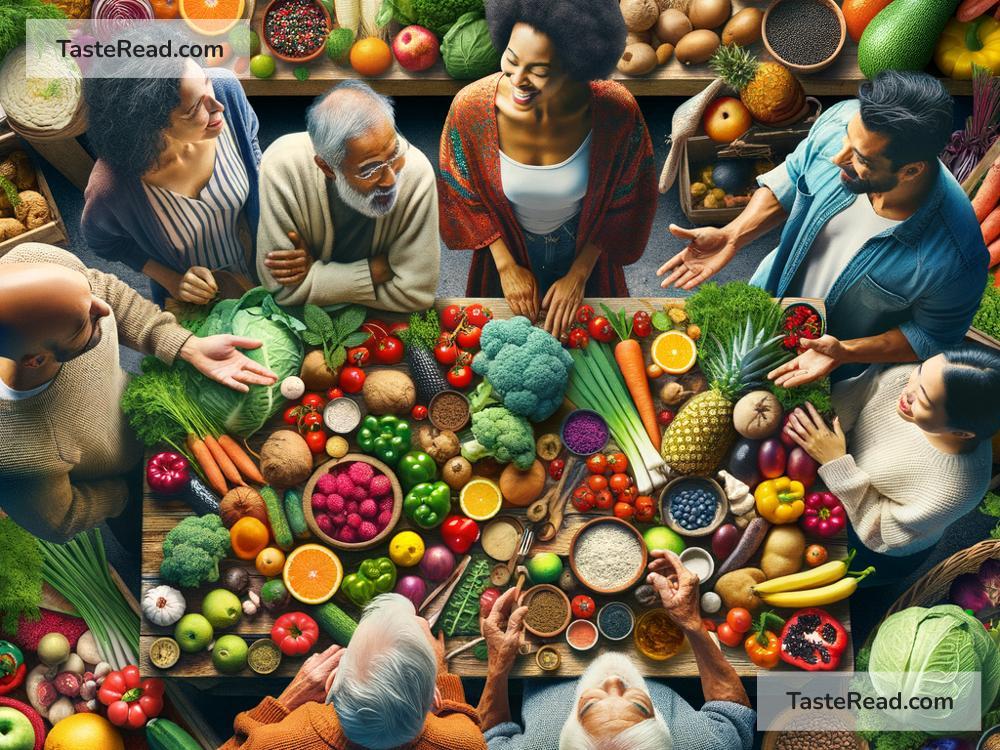The Future of Food and Cultural Diversity
Food is an important part of human life. It nourishes our bodies, brings people together, and represents who we are. Every culture, country, and community has unique foods that tell stories about its history, traditions, and values. But as technology changes, the world evolves, and people move to different places, the way we grow, cook, and share food is also transforming. In this blog, we will talk about the future of food and how it connects to cultural diversity.
The Changing World of Food
Today, the world is facing big challenges when it comes to food. Climate change is impacting crops—floods, droughts, and unpredictable weather make farming harder. The global population is growing, which means there are more mouths to feed, yet agricultural land is limited. On top of that, some traditional food practices are disappearing as people move to cities, adopt modern lifestyles, and lose touch with their cultural roots.
However, this isn’t the whole story. Technology and innovation are offering new solutions for how we create and experience food. Here are some examples of how the future of food could look:
1. Lab-Grown Food
Scientists are developing ways to grow meat and dairy products in labs. These foods come from real animal cells but don’t require raising or killing animals. Lab-grown meat could help address food shortages and reduce environmental harm caused by factory farming.
2. Vertical Farming
Instead of growing crops in large farmlands, vertical farming uses stacked layers of gardens inside buildings. These farms use less water and space, grow food faster, and are ideal for cities where land is scarce.
3. Plant-Based Innovations
More people are adopting plant-based diets, both to improve health and be kinder to the planet. Companies are now making creative protein alternatives from peas, soybeans, mushrooms, or even insect flour.
4. Smart Technology
Smart sensors and AI are helping farmers monitor soil, water, and crop health more efficiently. This helps farmers use resources wisely and grow food sustainably.
While all these technologies are exciting, we must ask an important question: How will these changes impact cultural diversity?
Food and Culture: A Special Bond
Food isn’t just something we eat—it’s a way for people to express their identity. Think about how different dishes, spices, or cooking techniques are linked to specific cultures. Sushi tells the story of Japan; tacos speak of Mexico, and biryani reflects South Asian traditions. Even small family recipes passed down over generations carry meaning and history.
Food is also deeply tied to celebrations and social gatherings. Whether it’s Thanksgiving turkey in the U.S., mooncakes during China’s Mid-Autumn Festival, or injera at Ethiopian communal meals, shared feasts unite people based on their unique traditions.
But as modern food technologies take center stage, will cultural recipes and traditions be preserved, or will they be lost in the process?
Mixing Innovation and Tradition
The future of food has the potential to enhance cultural diversity instead of erasing it. Here’s how we can balance innovation with tradition:
1. Preserving Old Recipes
Communities can use digital tools like blogs, video tutorials, or apps to document ancient recipes and techniques. This ensures traditions are passed down even if the ingredients or farming methods change.
2. Fusion Foods
Globalization connects different cultures, and one exciting result is fusion cuisine. For example, Korean tacos mix ingredients from Korea with Mexican food styles. This blending creates an opportunity for cultural exchange while celebrating diversity.
3. Local Ingredients with Modern Methods
Even in the age of lab-grown food and vertical farming, chefs and food creators can prioritize local flavors and ingredients. This can keep cultural foods authentic while adapting to sustainable practices.
4. Education and Awareness
Educating people about the origins of their meals can foster appreciation for different cultures and inspire curiosity about food traditions. Schools, documentaries, and cultural festivals can help spread awareness.
What We Can Do
As we move toward the future, everyone plays a role in shaping how food and culture coexist. Farmers, scientists, chefs, policymakers, and consumers—all have responsibilities. Here’s what you can do:
- Support Local Farmers: Buy from local markets instead of relying on mass-produced goods. This supports traditional crops and farming practices.
- Try Foods from Other Cultures: Explore cuisines outside your comfort zone. This builds appreciation for cultural diversity and brings people closer.
- Adopt Sustainable Practices: Think about how your food choices impact the planet. Support eco-friendly initiatives like plant-based diets or zero-waste cooking.
- Teach the Next Generation: Share family recipes and cooking traditions with kids. This helps keep cultural heritage alive.
A Bright, Shared Future
The future of food is full of potential. Technology will provide innovative ways to feed the world’s population, but cultural diversity will continue to enrich our plates and our lives. The next generations will experience new foods while honoring age-old traditions. Together, we can create a world where food remains a joyful and meaningful connection to our shared humanity.
So, open your heart and your kitchen to the many flavors of the world—you might find that the future of food is both exciting and delicious.


